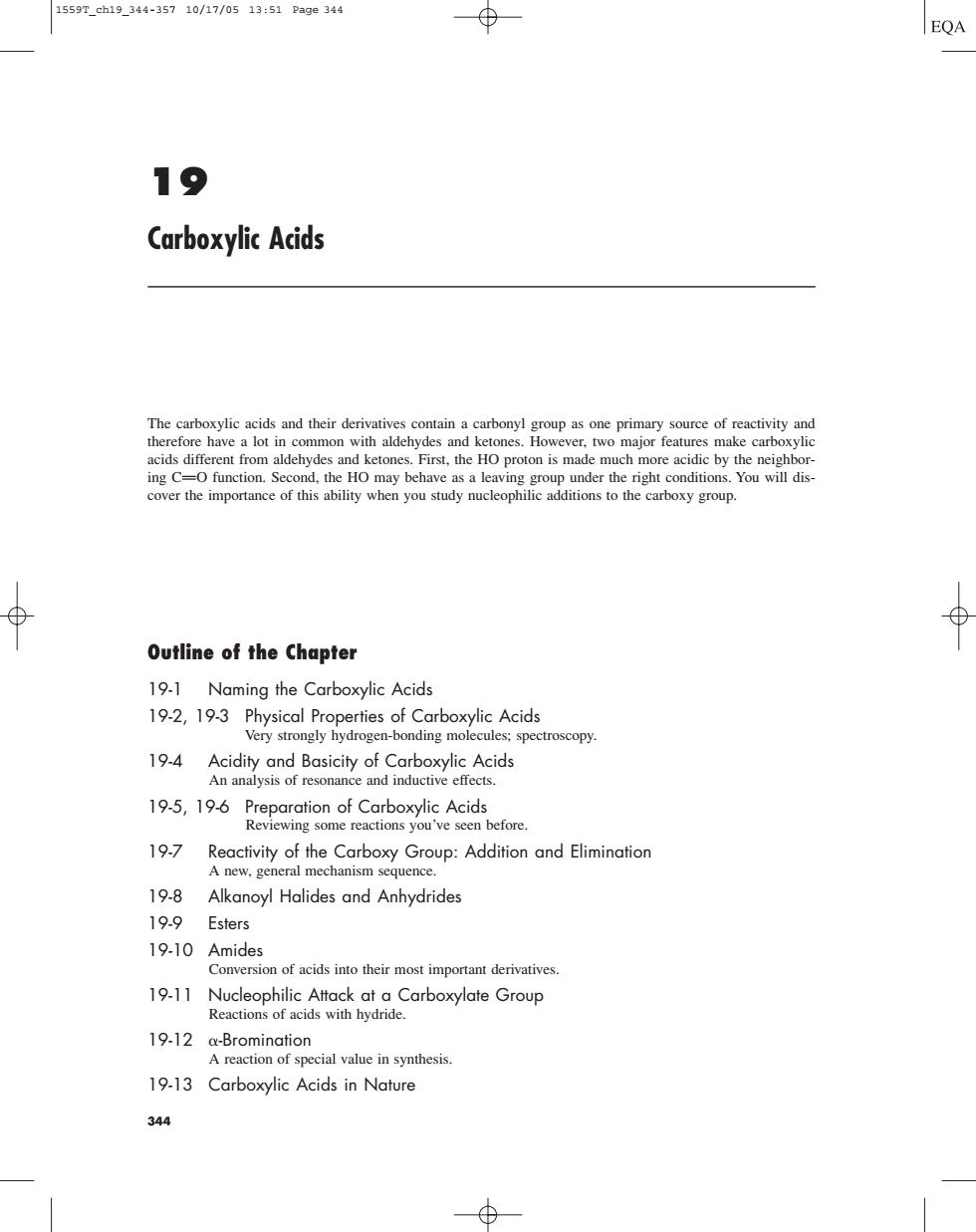正在加载图片...

1559Tch19344-35710/17/0513:51Page344 EQA 19 Carboxylic Acids s.You will dis my wnen you study nu oxy group Outline of the Chapter 19-1 Naming the Carboxylic Acids 192,193rgce 19-4 Acidity and Basicity of Carboxylic Acids An analysis of resonance and inductive effects. 19.5, 197 Reactivity of the Carboxy Group:Addition and Elimination 19-8 Alkanoyl Halides and Anhydrides 199 Esters 19-10 Amides Conversion of acids into their most important derivatives. 19-11 Nucleophilic Attack at a Carboxylate Group Reactions of acids with hydride. 19.12 -Bromination cial value in synthesis. 19-13 Carboxylic Acids in Nature 34419 Carboxylic Acids The carboxylic acids and their derivatives contain a carbonyl group as one primary source of reactivity and therefore have a lot in common with aldehydes and ketones. However, two major features make carboxylic acids different from aldehydes and ketones. First, the HO proton is made much more acidic by the neighboring CPO function. Second, the HO may behave as a leaving group under the right conditions. You will discover the importance of this ability when you study nucleophilic additions to the carboxy group. Outline of the Chapter 19-1 Naming the Carboxylic Acids 19-2, 19-3 Physical Properties of Carboxylic Acids Very strongly hydrogen-bonding molecules; spectroscopy. 19-4 Acidity and Basicity of Carboxylic Acids An analysis of resonance and inductive effects. 19-5, 19-6 Preparation of Carboxylic Acids Reviewing some reactions you’ve seen before. 19-7 Reactivity of the Carboxy Group: Addition and Elimination A new, general mechanism sequence. 19-8 Alkanoyl Halides and Anhydrides 19-9 Esters 19-10 Amides Conversion of acids into their most important derivatives. 19-11 Nucleophilic Attack at a Carboxylate Group Reactions of acids with hydride. 19-12 -Bromination A reaction of special value in synthesis. 19-13 Carboxylic Acids in Nature 344 1559T_ch19_344-357 10/17/05 13:51 Page 344